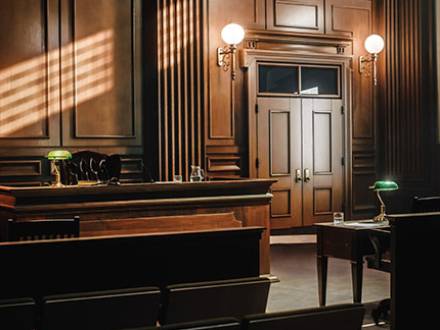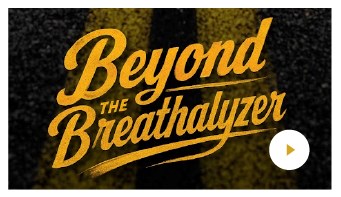TRIAL ADVOCACY TUESDAY TIPS AND TRICKS - CASE #2: U.S. v. Cortez
 I am pleased to present our second installment of Trial Advocacy Tuesday where we take a brief look at how to use the Fourth Amendment Friday Fundamentals case from last week.
I am pleased to present our second installment of Trial Advocacy Tuesday where we take a brief look at how to use the Fourth Amendment Friday Fundamentals case from last week.
Since Cortez gives us the "totality of the circumstances" umbrella, let’s use that to our advantage. Here are three trial advocacy tips and tricks on how to make US v. Cortez work for you and your clients in the courtroom:
Advocacy Tip #1: Dissect the "Totality of the Circumstances" - Pre-Trial Motion to Suppress
Remember that Cortez requires suspicion be based on specific and articulable facts that, when taken together, indicate possible criminal activity. Many DUI stops and detentions are built on innocuous facts that the police stack on top of each other (such as time of night, leaving an establishment that (GASP!) serves alcohol, driving slightly under the speed limit, etc).
The way to defeat this is to point out everything that the officer could have seen, but did not see. Take the driving behavior, as an example. Break down every driving move that client made. If he or she drove five blocks without a single violation, ask that officer about each block. If there were three stop signs, or traffic signals that the client navigated properly, ask about each one. Ask about every successful lane change. In short, if the officer had an opportunity to see driving behavior that indicates impairment, AND DID NOT SEE IT, that is something that should be consiI am pleased to present our second installment of Trial Advocacy Tuesday where we take a brief look at how to use the Fourth Amendment Friday Fundamentals case from last week.
Since Cortez gives us the "totality of the circumstances" umbrella, let’s use that to our advantage. Here are three trial advocacy tips and tricks on how to make US v. Cortez work for you and your clients in the courtroom:
Advocacy Tip #1: Dissect the "Totality of the Circumstances" - Pre-Trial Motion to Suppress
Remember that Cortez requires suspicion be based on specific and articulable facts that, when taken together, indicate possible criminal activity. Many DUI stops and detentions are built on innocuous facts that the police stack on top of each other (such as time of night, leaving an establishment that (GASP!) serves alcohol, driving slightly under the speed limit, etc).
The way to defeat this is to point out everything that the officer could have seen, but did not see. Take the driving behavior, as an example. Break down every driving move that client made. If he or she drove five blocks without a single violation, ask that officer about each block. If there were three stop signs, or traffic signals that the client navigated properly, ask about each one. Ask about every successful lane change. In short, if the officer had an opportunity to see driving behavior that indicates impairment, AND DID NOT SEE IT, that is something that should be considered in a true totality of the circumstances.
How many of you have heard the State ask this question:
"Officer, it isn’t about what you didn’t see, it's about what you did see, right?"
OBJECTION.
First, it’s leading. Second, it’s grammatically incorrect. Third, it’s stupidly, leadingly, grammatically incorrect, but I digress. What I argue, when they do this, to a moderate degree of success, is the following (and feel free to lift it word for word from this post, if you like):
If it is a TOTALITY, then let’s make it a true TOTALITY. The State doesn’t get to cherry pick its evidence, and hand it over to this Court, and say, see? Look at these three things he did wrong, and ignore everything else. That is not a TOTALITY of circumstances, it is a MICROCOSM of circumstances, hand-selected and curated to generate a specifically desired outcome.
Finish the State off with the quote from Cortez: "the process does not deal with hard certainties, but with probabilities…BASED ON THE WHOLE PICTURE."
Advocacy Tip #2: Attack "Experience" as a Substitution for Facts
Cortez allowed the admission of officer’s inferences drawn from training and experience, but only when those inferences are tethered to specific observations. Here is where your cross-examination skills are going to shine. Let’s do an example from each phase of the investigation:
Vehicle in Motion: We see a lot of stops here in Tucson for "wide right turns." These drivers are not making wide radius turns, where they overshoot the first available lane; rather, they move purposefully into the second lane. So ask the officer that:
Q: He moved directly into the second available lane? Q: He established himself in that lane? Q: And once he did, he had a steady lane position? Q: You followed him for a period of time before pulling him over? Q: You saw no other purported traffic violations? Q: No weaving (drifting, straddling, etc.)? Q: His driving behavior did not affect any other traffic?
So on and so forth. The officer’s conclusion that the driving behavior of "wide right turn = impairment" will seem nitpicky after you dissect him or her on cross, no matter how much training he or she has had.
Personal Contact: It is my personal belief that DUI cases will be won or lost in this phase. There are post-stop cues that the officers are trained to observe here. Remember the lessons from the totality of circumstances above and apply it here as well. If the officer says the person fumbled with the documents, or had trouble locating the registration, nail the officer down on exactly how that went. Also, bring out all the things the officer could have seen, and did not see to counteract his or her belief that fumbling fingers means impairment.
Pre-Arrest Screening:
The officers often use their training and experience to overlook the client’s limitations in performing the field sobriety tests, be it age, weight, mental ability, physical disability, etc. You can use that to question them on how they were trained to "take those things into account." They will look at you blankly. Jurors don’t like the idea that drivers are set up to fail the tests.
The officers also often minimize their own mistakes when it comes to the administration of the tests. Here you can capitalize on their use of the "training and experience" mantra:
Q: Based on your training and experience, you know these tests to be standardized. Q: Based on your training and experience, you know these tests to be validated. Q: Based on your training and experience, you know that the validation for these tests depends on the standardization. Q: And based on your training and experience, if that standardization is not observed, the validation can be compromised.
If they give you a deer in the headlights look, it is in the manual. Pg. 12, Session 8, 2023 Participant Manual
Advocacy Tip #3: The Constitution (and Proof Beyond a Reasonable Doubt) Requires Evidence, not Guesswork.
Judges decide suppression. Jurors decide guilt. But both decide credibility, and Cortez can help you shape that.
Use it to frame sloppy police work and argue for the rejection of the incantation of "training and experience" as a substitute for facts and actual evidence. In other words, reasonable suspicion is not suspicion alone. It has to be supported by facts, and not just those facts that the State wants the Court to hear, but all the available facts. Tell the Court at your suppression hearing that the State is trying to hang a series of zeroes on the scoreboard and suddenly call it ten. Undermine the "experience" leap with the suppression judge by saying the court can hear the officer’s inferences, but it doesn’t permit the officer to invent suspicion where none exists.
As for the jury, expose the shortcut. Hammer home everything the officer could have seen, but did not see. Stress that it is evidence of sobriety. Expose the shortcut that officer decided it was a DUI first and then went looking for reasons to back up his "hunch." Hunches aren’t proof beyond a reasonable doubt; they aren’t even close. Hunches based on experience don’t replace verdicts based on evidence.
In sum, don’t forget your Holmes. No, no, not Oliver Wendall. I mean Sherlock. A lack of evidence is, in and of itself, evidence. Use it wisely.
Stay tuned for more Trial Advocacy Tuesday Tips and Tricks.





